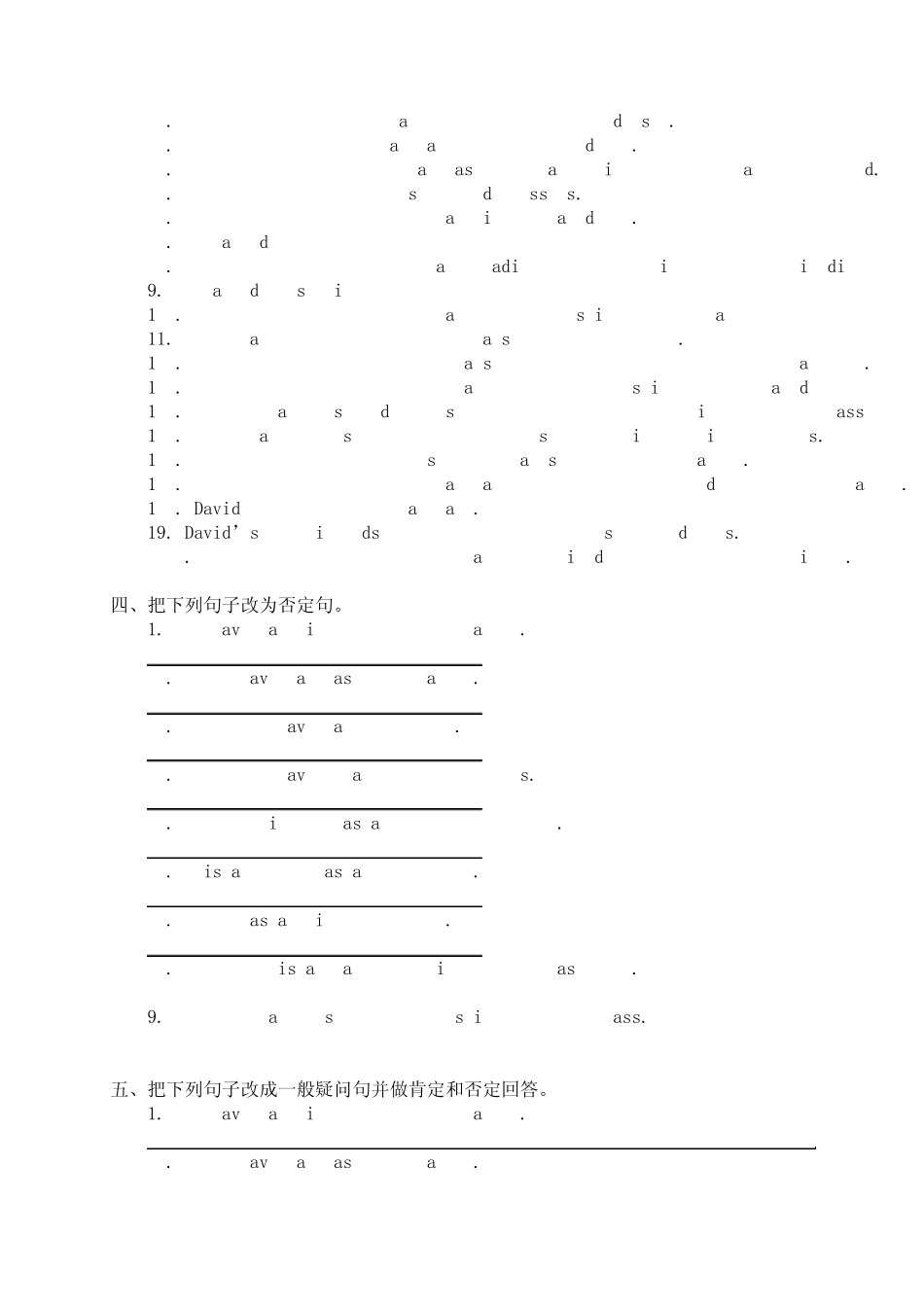There be 句型与have, has 的区别 一、There be句型 1.表示:在某地有某物或某人。 2.在there be 句型中,主语是单数或不可数名词,be 动词用is ;主语是复数,be 动词用are ;如有几件物品,be 动词根据最近be动词的那个名词决定。 There is a book on the desk. There is some water in the glass. There are three men under the tree . There is a bag,two books and three pens on the desk. 3.there be句型的否定句在be 动词后加not , 一般疑问句把be动词调到句首。 There is a duck in the river. 否定句:There is not a duck in the river. 一般疑问句:Is there a duck in the river? 4.some 和any 在there be 句型中的运用:some 用于肯定句, any 用于否定句或疑问句。 5.and 和or 在there be句型中的运用:and 用于肯定句, or 用于否定句或疑问句。 6.针对数量提问的特殊疑问句的基本结构是: How many + 名词复数 + are there + 介词短语? How much + 不可数名词 + is there + 介词短语? 7.针对主语提问的特殊疑问句的基本结构是: What’s + 介词短语? 二、have,has 1.表示:某人或某物“拥有”什么东西,强调“所属关系”,而且某人某物作为句子的主语。 2.have用在人称 I,we,you,they和复数的人或物后面。has用在人称 he, she, it和单数和人或物后面。 I have a daughter. He has a lucky dog. 三、There be句型与have,has有时也可以通用。 如:The classroom has ten desks. = There are ten desks in the classroom. 教室里有十张桌子。 注意: 1.“have + 表示一日三餐的名词”,意为“用餐”。如:have breakfast吃早餐,have lunch吃午饭,have supper吃晚饭。 2.“have + 表示食品、饮料等名词”,意为“吃;喝”。如:have (some) bread吃面包,have eggs (for breakfast) (早餐)吃鸡蛋,have (a cup of) tea 喝(一杯)茶。 3.“have + 表示动作的名词”,没有固定的意思,常与表示动作的名词同义。如: have a rest 休息一下 have a swim 游泳 have a drink (of...)喝一点(„„) have a look (at ...)(朝„„)看一眼 4.“have + 表示某种活动的名词”,意为“进行,举行”。如: have...


